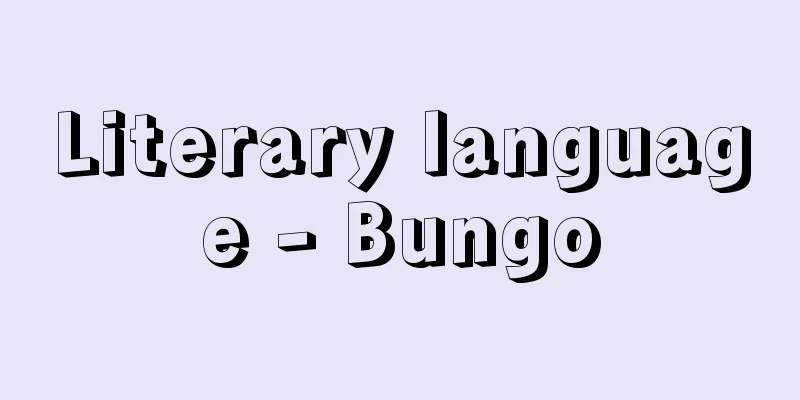Literary language - Bungo

|
A written language is a language that is expressed in characters, as opposed to spoken language, which is expressed by sounds. It is also called written language. However, in Japanese, the so-called modern language that is spoken and written in daily life is called spoken language, while the language of the old days and similar languages are sometimes called literary language. The Japanese expression style that was largely established during the Heian period was inherited by writings thereafter and continues to be the mainstream style of writing. What is accepted by society as formal writing follows the tradition of the Japanese writings of the Heian period, and thus the idea of literary language, or archaic language, was created. After the Meiji period, the movement to unify spoken and written language became mainstream, and written language that was closer to spoken language began to be written, but archaic language was also studied due to the need to know the classics. This was called the study of literary language, and the idea that literary language is archaic language became strong. In this sense, literary language is characterized by nine types of verb conjugation, two types each of adjective and adjectival verb conjugation, and a small use of case particles such as "ga" and "o," as well as significant differences in the vocabulary used. Furthermore, when literary language is considered as written language, in terms of grammar, case particles expressing subjective and objective cases are only used in very special cases, in terms of vocabulary there are a lot of Chinese characters, and in terms of style there is a need for precise correspondence between words that relate to the subordinate and subordinate parts. [Akiho Yamaguchi] Source: Shogakukan Encyclopedia Nipponica About Encyclopedia Nipponica Information | Legend |
|
音声によって表された口語に対して、文字によって書き表されたことば。文字言語。書きことばともいう。ただし、日本語では、日常、話したり書いたりする、いわゆる現代語を口語というのに対して、古い時代のことばおよびそれと同種のことばを文語とよぶこともある。 平安時代にほぼ確立した和文の表現形式は、それ以後の文章にも継承され、文章の形式として主流であり続ける。正式な文章として世の中で認められるものは平安時代の和文の流れをくむものであり、そのため文語すなわち古語という考え方がつくりだされた。明治以降、言文一致運動が世の主潮となり、話しことばに近い文章語が書かれるようになるが、古典を知るという必要性もあって古語の学習が行われる。それが文語の学習とよばれたこともあり、文語すなわち古語というとらえ方は強いものとなる。この意味での文語の特徴は、動詞活用が9種類、形容詞・形容動詞活用が各2種類あり、「が」「を」といった格助詞の使用が少ないといった文法に関する事項のほか、使われる語彙(ごい)に関してもかなりの違いがある。また、文語を書きことばとして考えると、文法の面では、主格・目的格などを表す格助詞は、ごく特別な場合以外使われないといったことがあるほか、語彙の面では漢語が多くなるということがあり、文体の面では、係りと受けとの語の照応が細かく求められるということがある。 [山口明穂] 出典 小学館 日本大百科全書(ニッポニカ)日本大百科全書(ニッポニカ)について 情報 | 凡例 |
Recommend
community antenna television
...It originated as a communal antenna television...
Glandular cell
...In addition, plants also have glandular tissue...
Ichikawa Sadanji
Kabuki actor. Takashimaya family name. Currently ...
Anafil - Anafil
...The technique is often depicted in Persian, Tu...
Divine beauty - Jinshu
A Zen monk from the Tang Dynasty in China. The fo...
Theodore II
… [Toshi Okakura]. … *Some of the terminology tha...
Ito Ittosai
Dates of birth and death unknown. Founder of the ...
Santa Isabel Island
A volcanic island in the southwest Pacific Ocean, ...
Large drum - Otsuzumi
A type of Japanese musical instrument. Percussion ...
The Kansei era ban on heretical learning
In the late Edo period, as part of the Kansei Ref...
Onagauji (English spelling) Rat-tailed maggot
The common name for the larvae of the syrphid fly...
Solvation - solvation
In a solution, several solvent molecules bind aro...
Imibiozen - Imibiozen
...At Ise Shrine, sacred offerings are cooked in ...
sant
...He was a pioneer of the sant poets of Maharash...
Maran, R.
…Despite the church's censorship, works such ...









